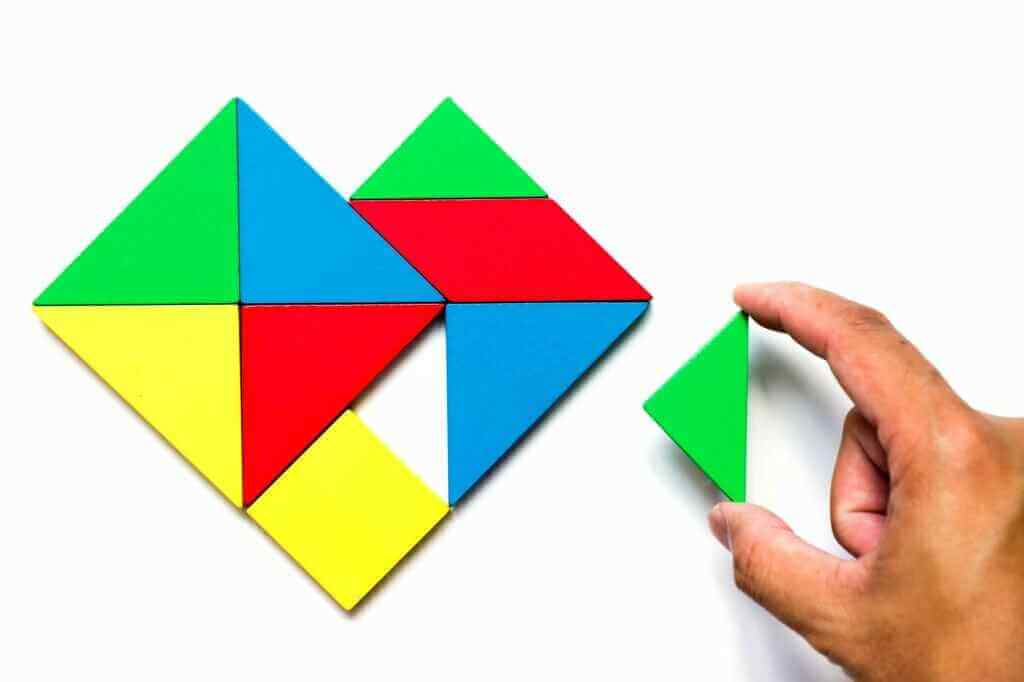The Pyraminx, a pyramid-shaped twisty puzzle, has gained popularity among puzzle enthusiasts for its unique challenge and solving techniques. Whether you’re a beginner looking to grasp the basics or an advanced solver aiming to enhance your skills, this article will provide valuable insights on how to solve the Pyraminx and master this intriguing puzzle.
Contents
1. Understanding The Pyraminx
The Pyraminx is not your typical cube puzzle; it’s a unique pyramid-shaped twisty puzzle that presents its challenges. To master it, you must first understand its structure and mechanics. The Pyraminx consists of four faces, each with a different color. The objective is to align all the colors on each face, making it a single color per side. However, the Pyraminx can twist and turn in various ways, which adds complexity to solving it. The puzzle’s structure can be described using notation, essential for communicating and understanding solving algorithms.
Notations like R (right), L (left), U (up), and B (back) are used to represent different types of moves. For example, an R move involves rotating the right face of the Pyraminx clockwise. Learning these notations is fundamental to effectively following solving algorithms and strategies.
2. Getting Started
Before diving into solving methods, it’s crucial to establish a solid foundation. If you’re new to the Pyraminx, familiarize yourself with the basic moves. Practice rotating each face in both clockwise and counterclockwise directions. This will help you get a feel for the puzzle’s mechanics and become comfortable with its movements.
Additionally, take the time to study the notation system. Understanding how to read and interpret Pyraminx notation is a fundamental skill that will serve you well as you progress in your solving journey. It will allow you to follow solving algorithms and instructions accurately.
3. Solving Methods
There are several methods for solving the Pyraminx, each with its techniques and strategies. Two of the most commonly used methods are the Layer by Layer (LBL) and CFOP methods.
Layer By Layer (LBL) Method
The LBL method is an excellent starting point for beginners. It provides a systematic approach to solving the Pyraminx, one layer at a time. The first step is to solve the top layer, followed by the middle and bottom layers. This relatively straightforward method helps build a solid understanding of Pyraminx-solving techniques.
CFOP Method
The CFOP method, which stands for Cross, F2L (First 2 Layers), OLL (Orientation of the Last Layer), and PLL (Permutation of the Last Layer), is a more advanced approach favored by speedcubers. This method focuses on solving multiple layers simultaneously, resulting in faster solving times. It requires memorization of many algorithms and demands precision and practice to execute efficiently.
Both methods have their merits, and their choice depends on your skill level and personal preferences. Beginners often start with the LBL method to grasp the basics, while those seeking faster solving times may transition to the CFOP method.
4. Key Tips For Success

No matter which method you choose, success in mastering the Pyraminx hinges on a few key tips:
1. Practice Regularly: Consistent practice is essential for improvement. Set aside dedicated time for Pyraminx-solving sessions. The more you practice, the more familiar you will become with different solving scenarios.
2. Learn Algorithms: Each Pyraminx-solving method relies on algorithms to navigate various solving scenarios. Memorize these algorithms to solve the puzzle efficiently. Practice them until they become second nature.
3. Stay Calm: Solving the Pyraminx can be challenging, especially when encountering complex cases. It’s crucial to remain calm and composed. Frustration can hinder your progress, so approach each solving session with a patient and positive mindset.
4. Experiment And Explore: Don’t be afraid to experiment with different solving techniques. While algorithms provide a structured approach, exploration can lead to the discovery of new strategies and shortcuts. Be open to trying different approaches and adapting your methods as needed.
5. Record Your Progress: Keeping a record of your solving times and progress is an excellent way to track your improvement. It allows you to identify areas where you may need more practice and helps you set goals for achieving faster solving times.
Conclusion
So, the answer to how to solve the Pyraminx? With patience, practice, and perseverance, you can conquer this challenging puzzle and enjoy the satisfaction of a solved Pyraminx in your hands. In conclusion, mastering the Pyraminx is an attainable goal with dedication and practice.
Whether you choose the structured approach of the LBL method or aim for speed using the CFOP method, the key is to continue learning and refining your skills. Understanding Pyraminx’s structure, practicing basic moves and notations, and exploring different problem-solving methods will contribute to your success. Happy solving!




